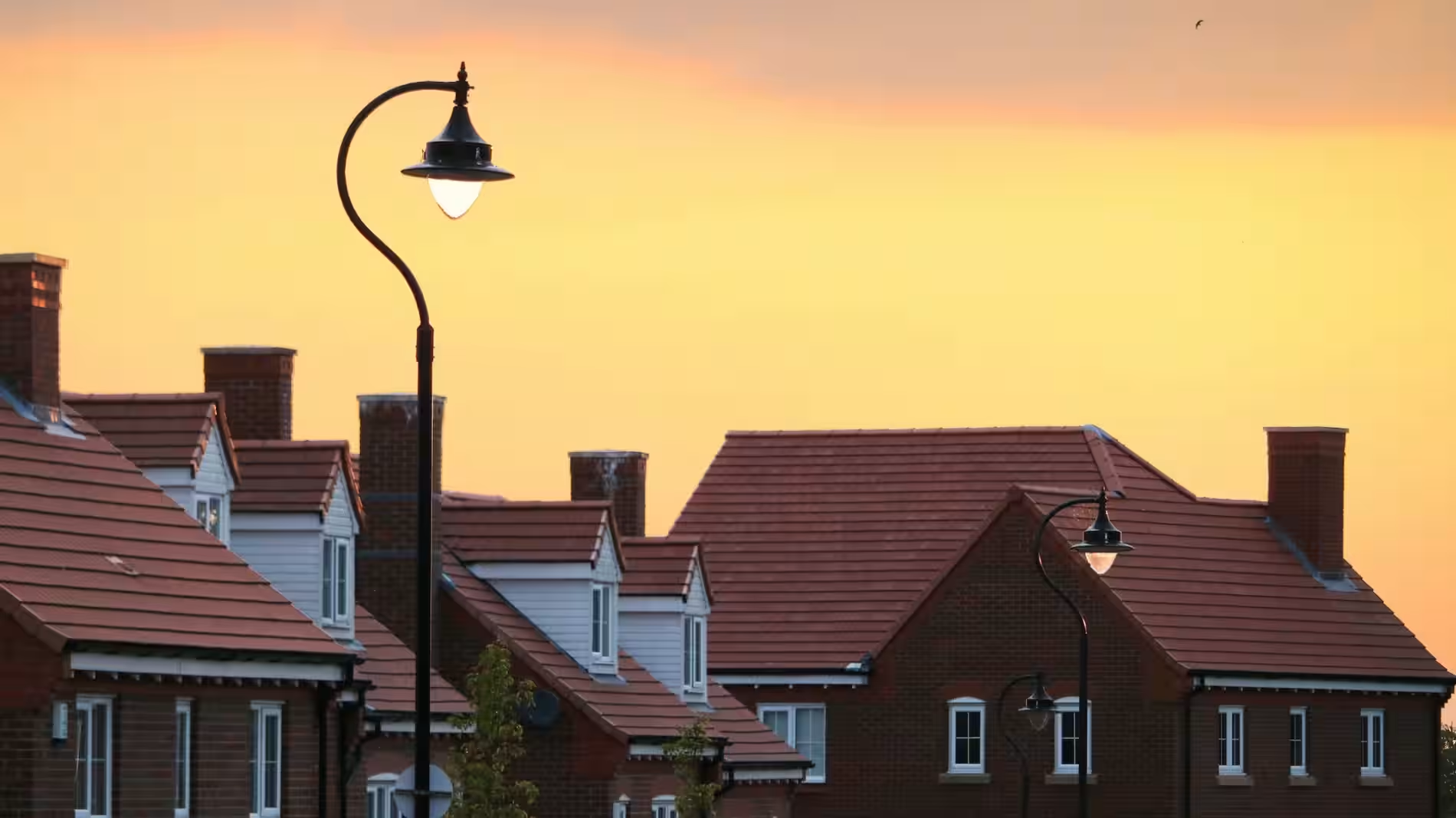Making decisions is a crucial part of buying a property and one of the greatest decisions you’ll have to make during this process is whether to purchase a new build or an older home.
In this article, we’ll discuss the distinctions between new builds and older homes, as well as the benefits and drawbacks of each, whilst offering helpful advice if you’re considering buying either.
- What is classed as a new build?
- What is considered an old house?
- Benefits of buying a new build
- Disadvantages of new build homes
- Benefits of buying an older home
- Is the Help to Buy ISA only for new builds?
- Can you use Help to Buy on old houses?
What is classed as a new build?
A new-build property is one that has recently undergone considerable renovation or has been newly constructed but has not yet been sold. New builds can also refer to ‘off-plan’ properties, whereby construction on the building or the land has not yet begun.
It’s important to note that when it comes to buying a new build property, different lenders will have varying criteria as to which properties sit under the definition of a new build – so always do your research.
What is considered an old house?
In the UK, an ‘old house’ is generally one that was built before 1940. Meanwhile, homes constructed before 1914 are sometimes referred to as a “period home,” such as a Georgian, Victorian, or Edwardian property.
Benefits of buying a new build
Asking yourself ‘should I buy a new build’? Many people buy new-build housing for practical reasons, in particular, avoiding the potential complexities involved in forming part of a chain of second-hand buyers.
Customisation
Many developers let you customise a newly constructed home, letting you pick the flooring, fixtures, and fittings, as well as the kitchen’s tiles and counters. If you’re involved in the planning process early enough, you may even be able to influence the design of your home.
Energy Efficiency
New builds are generally more energy efficient than older buildings for a number of reasons. Firstly, they are designed to meet current building regulations, which are much more stringent than they were in the past.
Secondly, they often incorporate energy-saving features such as double glazing and insulation into the design of the property. Finally, they tend to be better sealed against draughts and heat loss. As a result, new builds are much cheaper to heat and maintain than older properties.
No Chain
A new-build has no previous owners, so even if you have a house to sell, your chain ends with you, which can reduce the likelihood that your deal will fall through.
Developer’s Warranty
A developer’s warranty is provided with newly constructed homes, often lasting 10 years. If something goes wrong with your home, the developer is responsible for fixing it. However, after the first two years, these kinds of assurances do tend to diminish, so it’s good to keep that in mind.
Disadvantages of new build homes
Whilst there are advantages of purchasing a new build property, there are also some clear disadvantages too, including:
Delays
In the UK, delays can be common when it comes to the construction of new builds. Delays can be caused by a number of reasons, such as a shortage of supplies or even bad weather. Dealing with delays can increase the difficulties of a procedure that is already stressful, and it’s hard for those who have their heart set on a specific move in day.
Value depreciation
Like a brand new car, new buildings typically lose value after you purchase them. This is due to the premium price tag associated with new construction, which is out of character for the area and causes prices to drop before they rise. As a result, it may take some time before you begin to see any equity in your home.
Snags
Any minor problems, errors, or flaws in a finished structure are referred to as “snags”. A building with snags can usually still be used, although some components might not function properly or look unsightly. The developers are usually responsible for fixing these kinds of problems in new construction, at least if you find the snags within a specific time range.
Benefits of buying an older home
The benefits of buying an older home are mainly associated with space, size and character.
Space
Houses were generally larger in the past than they are today and people used to build on larger plots of land. An older house is the perfect solution if you’re seeking a long-term investment with a few more bedrooms.
Older homes also tend to have bigger garden areas, because they were constructed in a time when land was plentiful and less expensive. The idea of having a larger garden is hard to pass up if you have children or simply enjoy having a green space to play in.
Character and quirks
While new builds frequently resemble blank canvases, older homes can often have lovely original features such as; fireplaces, sloping ceilings, wooden beams, crown moulding in the corners and perhaps even a thatched roof.
These qualities can, of course, be somewhat duplicated in a new construction, but there are some things that money cannot buy.
Add your own value
Newly constructed homes can be more difficult to add value to. If the house is older, there may be untapped potential, such as a huge kitchen expansion or a loft conversion.
Cons of buying an old house
The cons of buying a house tend to be related to the general ageing of the property – it’s extremely important that thorough surveys are completed before you commit to purchasing an older property.
Structural & surrounding issues
Older properties may have hidden structural issues that can be expensive to repair. Look out for cracks in plaster, brickwork and stonework, bulging or leaning walls, sagging roofs, roof leaks and uneven floors. It’s highly advised to have a thorough inspection done by a professional before making an offer.
Older homes’ foundations can sometimes be invaded by old trees with deep roots. This may have a detrimental impact on systems like plumbing and heating as well as structural problems.
Wear and tear
The wear and tear from people moving in and out may be greater in older homes since they have been inhabited for much longer.
More costly to run
The age of a building has the biggest impact on its energy efficiency, with newer homes much more likely than older homes to have an EPC rating of C or above. With a better EPC rating, the homeowner can expect much lower costs on energy bills and more efficient heating and cooling of the home.
Is the Help to Buy ISA only for new builds?
No, the help to buy ISA is not exclusive to those buying new build properties for their first home. What is exclusive to new builds is the help to buy equity loan. The two initiatives are different and should not be confused with one another. We explain more below.
What is the Help To Buy ISA?
The help to buy ISA (which is no longer open to new applications as of November 2019) is a Government backed ISA, where you are able to save up to £200 a month toward your first house and the Government will match 25% of your savings up to a maximum of £3,000 in bonus funds.
The bonus is available on homes you buy for £250,000 or less, or £450,000 in London (defined as inner and outer London boroughs). Unlike some other Government schemes, you’re not restricted to buying a new build – any property works, provided you’re buying with a mortgage.
What is the Help to Buy Equity Loan
The government-funded Help to Buy equity loan programme seeks to provide financial assistance to first time buyers who want to purchase a new build home.
The plan enables you to borrow between 5% and a maximum of 20% (40% in London) of the property’s worth. As a result, buyers will only need to save a 5% down payment, which will be financed with a 20% equity loan. The balance of the cost to purchase your property is covered by a 75% mortgage.
The Help to Buy Equity Loan ends on 31 March 2023 and closes to new applications on 31 October 2022. To be eligible for an equity loan, you must legally complete the purchase of your house by 31 March 2023.
Can you use Help to Buy on old houses?
Yes – you can use your help to buy ISA savings towards an old house, but you won’t be eligible for the Help to Buy equity loan scheme, as that is solely reserved for new builds and a different initiative altogether.
Whether new build or old house, make sure you’re insured
Contact us today to find out which insurance package you need on your home whether you opt for a new build or an old home, Stanhope’s team of experts ensure you’re covered for peace of mind and protection.

